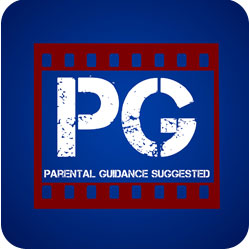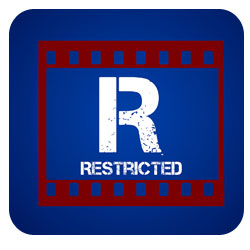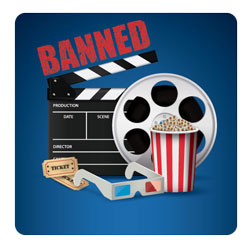When it comes to today’s movie industry, it isn’t uncommon to hear the use of profanities or see scenes of violence, drug usage, and even nudity on the big screen – this has not always been acceptable. There has been a long history of controversy and conflict about what should or should not be seen or said in movies. Concerns over morality and a lack of decency often caused many films to be censored and in some instances, even banned as a result of their content. Today, movies are rated based on their content and are not censored as they were in the past. In order to appreciate the rating system that is in place, one must first learn what the rating system entails and understand the history of censorship in American film.
Movie Censorship
 There have been concerns about the moral threat of movies dating back as early as 1896. The first censorship law for movies in the United States occurred in 1907 in Chicago. This was the first of many cases of local censorship across the country, each with their own standards and rules. In 1915, the Supreme Court came to a ruling that the film industry was not protected by the First Amendment and the continued local and state censorship of motion pictures was constitutional.
There have been concerns about the moral threat of movies dating back as early as 1896. The first censorship law for movies in the United States occurred in 1907 in Chicago. This was the first of many cases of local censorship across the country, each with their own standards and rules. In 1915, the Supreme Court came to a ruling that the film industry was not protected by the First Amendment and the continued local and state censorship of motion pictures was constitutional.
By the 1920s, however, religious groups were calling for federal censorship of the motion picture industry as Hollywood was seen as being extremely corrupt with questionable morals due to scandals and the continued release of what was considered highly risqué films at the time.
In efforts to prevent outside interference, Hollywood established the Motion Picture Producers and Distributors of America (MPPDA). This new organization was headed by a man named William Hays, who was a former postmaster general. In efforts to provide some guidelines for movies the MPPDA developed what was called “The Don’ts and Be Carefuls” based off of previous restrictions by censors in the past. This was a list that stated eleven topics that should never appear in movies and twenty-six topics that should be handled with care. This however was not sufficient as there was no way to enforce adherence to it.
As talking films became more prominent, the outrage and concern over the immoral nature of Hollywood pictures continued to grow. To counter this the Production Code of 1930 was created. Widely referred to as the “Hays Code”, it was meant to restrict movies that would lower the moral standards of people who watched films. It was also meant to prevent movies that would cause the audience to sympathize with the wrongdoers or with anything that was considered a sin. Despite the release of the Hays Code, few producers followed it.
![]() Unimpressed by the Hays Code and its results, the Catholic church continued to call for greater censorship of films. It formed an organization that was known as the Catholic Legion of Decency which independently reviewed movies in order to judge their moral content. If a movie was considered a threat to moral decency, Catholics were urged to avoid viewing it. In some cases a call was given to boycott certain movies.
Unimpressed by the Hays Code and its results, the Catholic church continued to call for greater censorship of films. It formed an organization that was known as the Catholic Legion of Decency which independently reviewed movies in order to judge their moral content. If a movie was considered a threat to moral decency, Catholics were urged to avoid viewing it. In some cases a call was given to boycott certain movies.
As a result, the movie trade association created the Production Code Administration Office (PCA). The PCA was headed by Joseph Breen, a Catholic man. The PCA helped enforce the Hays Code. Movies that passed the PCA and the MPPDA would receive both a MPPDA seal and also a PCA certificate number. Movies that did not have the seal and certificate were not shown in movie theaters that were owned by major studios, which made up 70 percent of the theaters at the time.
Resistance to the Production Code and film censorship began to appear around World War II. In 1945 the MPPDA was renamed The Motion Picture Association of America (MPAA), which is the name it still uses today. In 1952 the Supreme Court overturned the 1915 decision and ruled that motion pictures were entitled to First Amendment protection. In 1956 the MPAA loosened up some of the code, allowing previously banned content in film, such as the portrayal of drug use. Television also became an increasing problem as more people began to watch TV as opposed to going to the movies. This made the motion picture industry evaluate some of its views. The movie industry continued to follow the Hays Code until November 1968 when it was replaced by the rating classification system.
Film Ratings
 Movie ratings are not meant to censor movies or to indicate the quality of a film. They are instead a way for parents to evaluate the content of a movie for appropriateness. It may also help adults avoid movies that contain elements that they find offensive for themselves as adults. Each film is given a rating by a board of parents who view a movie and evaluate factors such as sex, violence, drug use, and language. Based on this information the movie is given a letter rating that indicates what the level of content for viewing suitability in terms of what children should watch. The ratings are G, PG, PG-13, R, and NC-17.
Movie ratings are not meant to censor movies or to indicate the quality of a film. They are instead a way for parents to evaluate the content of a movie for appropriateness. It may also help adults avoid movies that contain elements that they find offensive for themselves as adults. Each film is given a rating by a board of parents who view a movie and evaluate factors such as sex, violence, drug use, and language. Based on this information the movie is given a letter rating that indicates what the level of content for viewing suitability in terms of what children should watch. The ratings are G, PG, PG-13, R, and NC-17.
A movie that has a “G” rating is for general audiences. A movie that is given this rating is suitable for children of all ages and will have no objectionable or offensive materials. A PG rating stands for “Parental Guidance.” PG movies suggest that parents may not like some portion of the film for young children, however, overall the film is suitable for younger audiences. Movies that are given a PG-13 rating are films that parents should be more cautious about. These films contain content that parents might find inappropriate for children under the age of 13.
 Movies that are “R” rated are “Restricted” films. These films contain adult content such as violence or drug usage, or even partial nudity. Children under the age of 17 must be accompanied by an adult for admittance into these movies. Parents may want to learn more about R-rated movies before taking their children to view them. If a movie is rated NC-17, it is an adult-only film. Anyone under the age of 17 will not be admitted even if an adult is present.
Movies that are “R” rated are “Restricted” films. These films contain adult content such as violence or drug usage, or even partial nudity. Children under the age of 17 must be accompanied by an adult for admittance into these movies. Parents may want to learn more about R-rated movies before taking their children to view them. If a movie is rated NC-17, it is an adult-only film. Anyone under the age of 17 will not be admitted even if an adult is present.
These rating definitions are included on the actual rating so that there is no confusion about what a particular movie rating means. Rating descriptors are also a part of the rating. The descriptor will explain exactly what issues caused the film to receive a particular rating.
Movies Banned in the U.S.

- Dorlita in the Passion Dance
- Reenactment of the Massacre at Wounded Knee
- The Birth of a Nation
- Birth Control
- Haxan
Home Theater Seating
- Row One Theater Seating
- Red Leather Recliner Chair
- Recliners Made in the USA
- Lane Chairs
- Single Leather Theater Chair
- Recliner Chair Contemporary Design
- Palliser Home Theater Seats
- Ashley Home Furniture
- Cheap Home Theater Seating
- Space Saver Recliner Chairs
- Movie Theater Chairs
- Awesome Sectionals
- Reclining Armchairs For Sale
- The Theatre Store
- Loveseat And Sofa Sets
Decor & Accessories
- Home Theatre Decor
- Home Theater Seat Shakers
- Theater Marquee Sign
- Acoustic Panels for Sale
- Rugs For Movie Room
- Elevated Recliner
- Theater Room Decor
- Basement Home Entertainment Ideas
- Carpet For Theater Room
- Home Theater Riser
- Octane Theater Chair
- Stallion
- Best Brand Of Sofa
- Theater Chair Recliner In Grey
- Best Brand Power Recliner
Top Pages
- Home Theater DIY
- The Best Recliner Chairs
- Berkline Recliners
- Theater Recliner Reviews
- Best Leather Recliners
- Recliners for Large Man
- Best Streaming Service
- Power Recliner
- Best Theater Sectional
- Recliner Massager Chair
- Theatre Couch Furniture
- Row Of 4 Home Theater Seating
- Making A Sound Proof Room
- High Back Luxury Chair
- Electric Reclining Lounge Chair
- Speaker Wire For Home Theater

